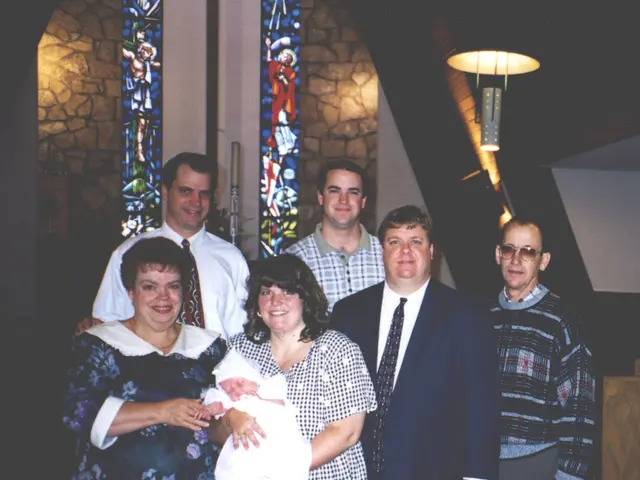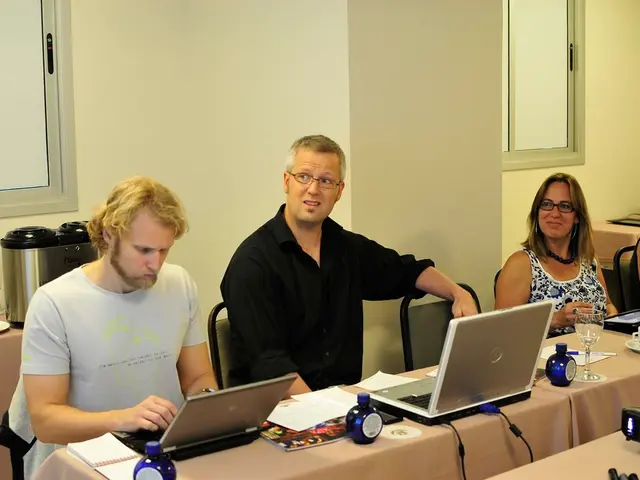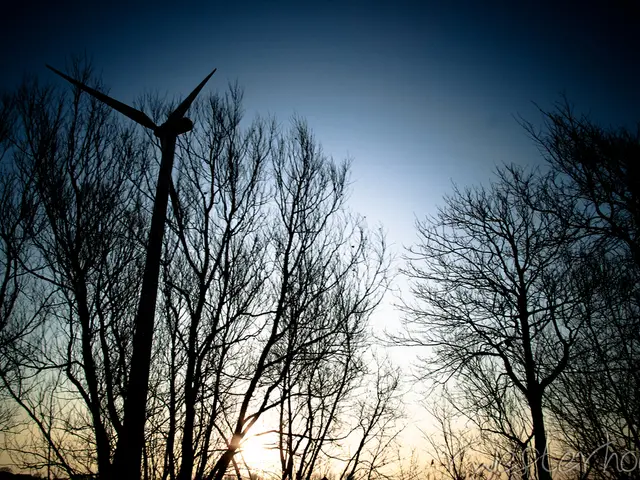Harness the Power of Everyday Commute with this Compact Turbine
These turbines, though smaller than their bulky counterparts, hold a strategic advantage that makes them highly versatile - they can fit almost anywhere, including existing streetlights, and can be powered not just by wind, but also by passing vehicles.
As you stand by the roadside and a bus whizzes by, you'd likely feel the subtle breeze. Why let such energy go to waste? asked Barry Thompson, CEO of Alpha 311, a turbine design company.
Following successful trials at O2, Alpha 311 is now preparing to introduce an improved version of their turbine, suitable for commercial installation.
Like a Formula 1 Car
Alpha 311 was founded by Thompson and mechanical engineer John Sanderson during the 2020 Covid-19 lockdown. They built a prototype in Thompsons backyard, then collaborated with an external company to create a more advanced version. The resulting image was later shared on Thompson's LinkedIn profile, drawing attention from O2.
Three turbines were installed at O2, but one had to be removed after the venue was damaged by Storm Eunice in 2022.

Each turbine is made of carbon fiber, the same material used in F1 racing cars. They stand at 1.8 meters and weigh around 40 kg, but the actual rotor weighs over 30 lbs. "Wind turbines are quite light," pointed out Thompson. "It's much easier to rotate lighter turbines compared to heavy ones like those made of glass fiber or metal."
He further explained that the infrastructure needed to handle the turbine-generated power is already in place as it's wired into streetlights to accommodate heavier lighting. This power can be immediately used for street lighting, and any excess can be sold back to the grid, providing an income source for local authorities managing or owning the streets.
Traveling Cars as Energy Generators
One small car traveling at 50 miles per hour produces 12 miles per hour of wind, sufficient to rotate the turbine. On a highway, each turbine provides 30 times the power of a 300-watt solar module - that's about 14 such modules on a building.
Currently, Alpha 311 is working on a scalable commercial version of the turbine. "We've run fluid-structure interaction analyses and have shaped the turbines to be as efficient as possible," said Thompson. "We're now heading into a wind tunnel with a British university and planning to sell the product."
With over 900 private companies and local authorities from 117 countries expressing interest, Alpha 311 plans to install the first turbines on a road in Telford and Wrekin, England, in the first half of the next year. The goal is to install up to 181 turbines, making 20,000 streetlights in the area carbon-neutral.
Additional Sensors
While the idea of using car-generated wind energy is interesting, Alasdair McDonald, a professor of engineering at the University of Edinburgh, Scotland, pointed out potential challenges. "Small-scale wind turbines typically produce less energy per rotor area as they're installed at lower heights with less consistency in wind flow," he said.
"Moreover, winds are usually turbulent at these heights, which can increase strain and make energy generation more challenging. The balance between energy gain from car airflow and general wind conditions varies, as roads are often shielded from wind effects."
Luckily, Alpha 311 plans to analyze every installation site, taking into account traffic flow, vehicle size, and average speed. They also noted that wind speed can double in the middle of an autobahn, significantly increasing the amount of energy that can be harnessed. They further emphasized that many major roads have trees or barriers installed to reduce noise and create a tunnel effect, enabling the turbines to function even at low traffic, such as late at night.
McDonald also mentioned that the installation on lamp posts represents a novel aspect of the turbine, while mounting on an existing turbine could pose a challenge.
The 15,000-pound turbines (about 18,000 USD) can be expensive but can significantly reduce electricity bills for organizations installing them, eventually recovering the investment in a few years. They can also be equipped with additional sensors for air quality monitoring or traffic flow.
The goal is to install 200 turbines in the next year and then scale up production using improved manufacturing techniques, with the local benefit of renewable technology being crucial to the transition towards a decentralized, renewable energy-based society.







